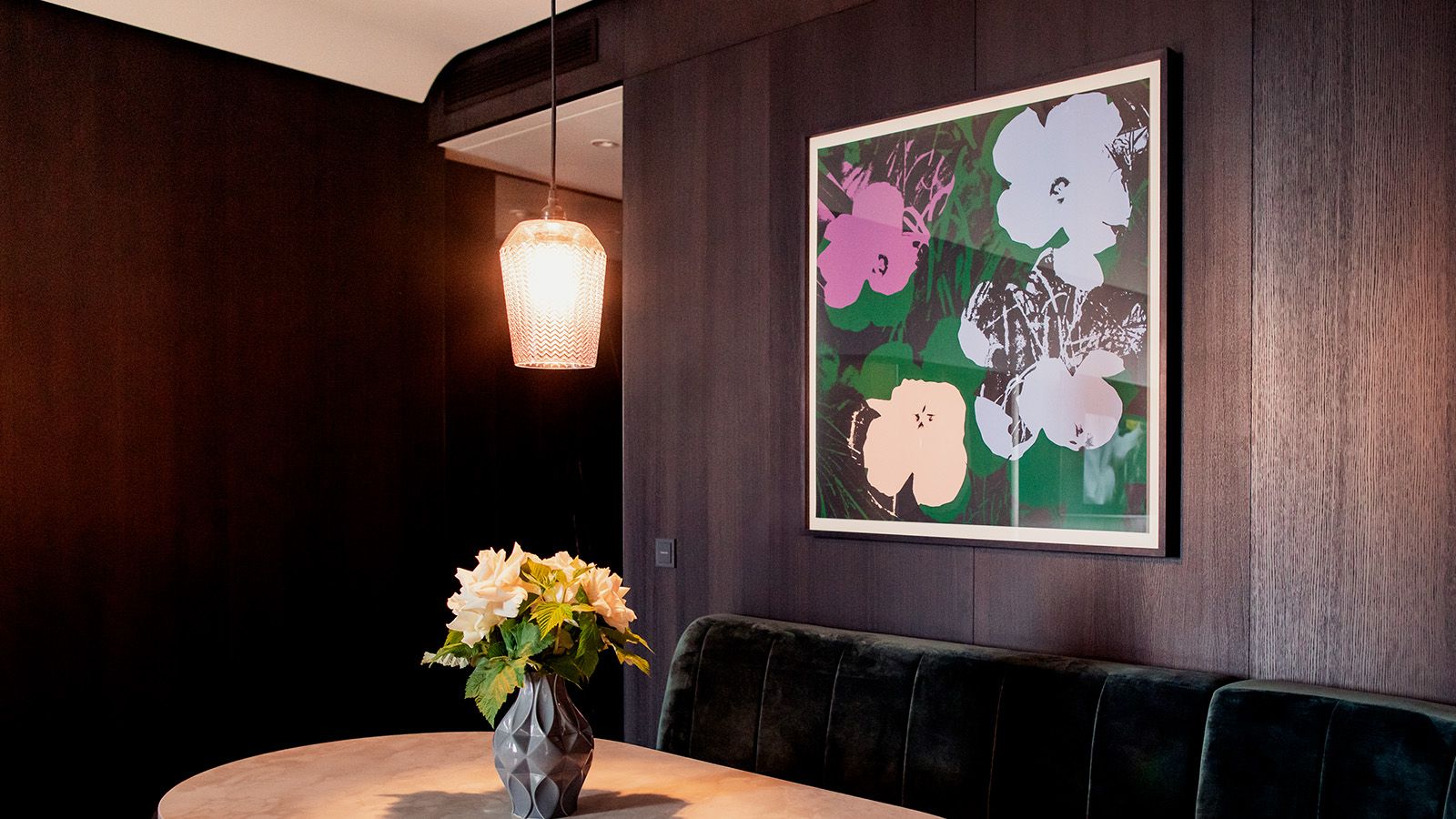“Sunday B. Morning (After)” | Flowers blue-black | screenprint
Andy Warhol is certainly the most important and most successful artist of American Pop Art. As a second-hand graphic artist, he became familiar with a wide variety of techniques. In 1962, he specialized in screen printing, having already experimented with “droppings”. He later added films, which he created mainly in his factory in encounters with many well-known artists of his time.
Mass media, consumer objects and personality cults inspired him to create his works. He wanted to become famous – and he did. Especially with his portraits of legendary personalities such as Marilyn Monroe, Jaqueline Kennedy, Liz Taylor and many others. He always applied his motifs in a wide variety of colors and repeated them serially. This also applies to the Flowers in the Koenigshof Collection. His own comment on this type of duplication was, “I love to do the same thing over and over again.”
Eva Mueller | Art Consultant
Curator of the Koenigshof Collection
VITA ANDY WARHOL (short form)
1928 born in Pittsburgh, USA | 1945-49 studied commercial art, graduated in painting and design, Carnegie Institute of Technology, now Carnegie Mellon University, Pittsburgh, USA | 1940 worked in a shoe factory | 1950 commercial artist and window dresser | 1956 exhibition as a graphic designer at Moma NY | 1962 first solo exhibition and founded the “Factory” studio, Film studio, party location, specializing in screen printing | 1962 he also exhibited his Campbell’s Soup Cans for the first time, which initially met with great incomprehension and later fetched top prices | 1968 he survived an assassination attempt | 1987 died in NY, USA
EXHIBITIONS AND WORKS IN PUBLIC COLLECTIONS (selection)
Participants in documenta 4 and 6 | Museum of Contemporary Art, Los Angeles, USA | Museum für Moderne Kunst, Frankfurt | Museum Brandhorst | Tate Gallery of Modern Art, London, Great Britain | Museum Ludwig, Cologne | The Contemporary Austin, USA | 21st Century Museum of Contemporary Art, Kanazawa, Japan | Arken Museum of Modern Art, Ishoj, Denmark | Bayerische Staatsbibliothek Munich | Bayerische Staatsgemäldesammlung Munich | Ca’la Ghironda, Bologna, Spain | Cleveland Museum of Art, Pittsburgh, USA | Dayton Art Institute USA | FRAC Grand Large- Hauts-de-France, Dunkerque, France | Fondation Beyeler, Riehen, Switzerland | Fotomuseum Winterthur, Switzerland | Fukuoka Art Museum, Japan | GAM Galleria Civica d’Arte Moderna e Contemporanea, Turin, Italy | Getty Museum, Los Angeles, USA | Guggenheim Bilbao, Spain | Hamburger Bahnhof – Nationalgalerie der Gegenwart, Berlin | Hirshhorn Museum and Sculpture Garden, Washington, USA | Kawamura Memorial DIC Museum of Art, Sakura, Japan | KIASMA Helsinki, Finland | Kunstmuseum Liechtenstein, Vaduz | LENTOS Kunstmuseum Linz, Austria | Lenbachhaus Munich | Louisiana Museum of Modern Art Humlebaek, Denmark | Ludwig Museum Saint Petersburg, Russia | MOMA NY, USA | Museo Jumex, Mexico City, Mexico | Museum of Contemporary Art Australia, Sydney | National Museum of Modern and Contemporary Art Korea | S.M.A.K. Ghent, Belgium | Tehran Museum of Contemporary Art, Tehran, Iran | Ujazdowski Castle, Warsaw, Poland | mam – Museum de Arte Moderna, São Paulo, Brazil | Andy Warhol Museum of Modern Art in Mdezilaborce, Slovakia | The Andy Warhol Museum Pittsburgh | Whitney Museum of American Art (preserves the film estate)
